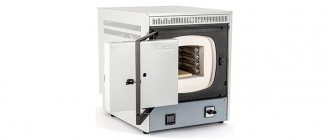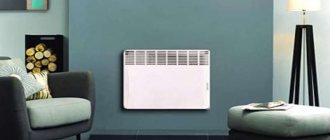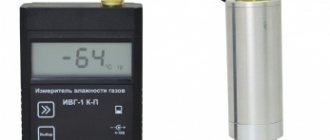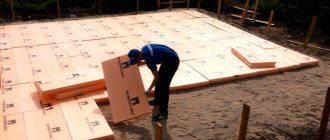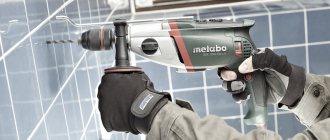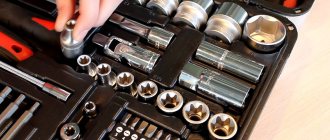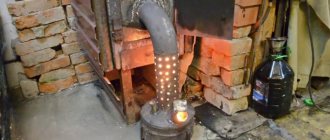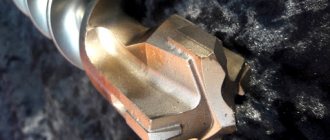Design, principle of operation and methods of filtration of construction vacuum cleaners
Since this article is intended primarily for those who have never been the happy owner of such equipment, you should start ab ovo.
Every beginner starts by asking the question: “What is a construction vacuum cleaner and why can’t you use a regular household one instead?” Indeed, at first glance, these two electrical appliances do not differ in anything except their dimensions. However, although they have a similar structure and principle of operation, they are still designed to solve different problems, and this leaves its mark in the form of a number of design features.
So, the main difference between these two varieties of the same device is the object with which you have to “fight”. A household vacuum cleaner does a good job of removing ordinary light house dust, but if there are small pebbles in its path, they most likely will not end up in the dust collector. The situation will be even worse if someone tries to remove fine-grained construction dust using a household vacuum cleaner: the unit will “spit out” a significant part of it along with the air flow. Moreover, a lot of “undigested” dust will get into the electric motor, and this will most likely cause the latter to fail.
The industrial analogue is initially designed to collect construction dust and other construction and industrial waste. And the volumes of work in question are only within the power of him.
The distinctive features of construction vacuum cleaners include an impact-resistant body, an increased diameter of the hose, a large volume of the dust collector (and, as a consequence, significant dimensions and weight of the unit itself), a highly efficient multi-stage filtration system, high engine power and its ability to work without interruption for a long time.
Design and principle of operation
The principle of operation of a vacuum cleaner (in this case it does not matter whether it is industrial or household) is quite simple and is well known to all of us from our school physics course. The fan, driven by an electric motor, creates a strong vacuum inside the vacuum cleaner, which is the main driving force. The air, along with dust and other solids, flows through the hose into this low-pressure zone.
Most of the debris that gets inside the vacuum cleaner remains inside the dust collector; the remaining suspension of fine particles in the air is captured by additional filters. After passing through a multi-stage filtration system, the purified air is released through the outlet into the atmosphere.
The design of a construction vacuum cleaner using the example of BOSCH GAS 35 L SFC: 1. Electric motor with fan; 2. Incoming air flow with debris; 3. Container for garbage collection; 4. Filter cleaning system; 5. Filter cleaning system switch; 6. Filter for air purification.
A distinctive feature of construction vacuum cleaners is that dust and other contaminants can be collected both directly during work and after its completion (the first option, of course, is preferable):
#1. Suction from the working area. The vacuum cleaner hose is rigidly fixed as close as possible (as far as possible, so as not to interfere with work) to the workpiece being processed. This option is far from ideal, but it still allows you to reduce the concentration of dust in the air in the work area.
#2. Connect directly to the instrument. Many modern power tools are equipped with a dust extraction system - a special dust ejection pipe to which you can connect a vacuum cleaner hose. The amount of dust both in the air and on the workpiece itself will be minimized. The connected hose somewhat interferes with the operation of hand-held power tools, but for the sake of comfortable working conditions it is quite possible to put up with this small inconvenience.
#3. Cleaning the premises upon completion of work. Debris and dirt that have accumulated in the workplace can be removed after finishing work using a vacuum cleaner in the most traditional way.
Dust collectors and filters
Just like household vacuum cleaners, construction vacuum cleaners are divided according to the type of dust collector into bagless and bagless. The first type can be equipped, at the user’s request and in accordance with the manufacturer’s recommendations, with both reusable (fabric) and disposable (paper) bags. The group of bagless vacuum cleaners is also heterogeneous; two structurally different subgroups can be distinguished in it - cyclone (container) and aqua vacuum cleaners. Let's look at the features, advantages and disadvantages of all four types of dust collectors for construction vacuum cleaners.
Fabric bags
Reusable cloth bags are the ones most familiar to users as they continue to be the most common in regular household vacuum cleaners. After filling such a bag with debris and dust, it should be emptied, shaken out and put back in place. The number of cycles of use of such a dust collector is quite large, and therefore this option can be classified as low-budget.
For the manufacture of reusable bags for vacuum cleaners, satin was previously used - a cheap and at the same time quite strong and durable material. Today, satin is practically not used for these purposes; it has been replaced by synthetic fabrics. Recently, non-woven fabric has become increasingly popular as a material for the manufacture of reusable dust bags.
We have already mentioned the main advantage of reusable fabric bags - their low cost per filling cycle. But they also have a significant drawback, which the future owner of a construction vacuum cleaner must be aware of.
The fabric, while retaining relatively large particles well, easily allows fine-grained construction dust to pass through, which scatters over long distances with the flow of air coming out of the vacuum cleaner, evenly covering all surfaces. However, modern two-layer fabric based on non-woven fabric is capable of capturing even small particles several microns in size, thereby providing a good degree of cleaning.
Paper bags
Disposable paper bags in the literal sense of this layer are consumables: once filled, they, along with all their contents, are sent to a landfill. For the user, this means, on the one hand, ease of use, but on the other hand, additional expenses, and quite a lot.
The cost of one paper bag for a construction vacuum cleaner is $5-6, and one day you will realize that you have already spent more on consumables than on the equipment itself. In addition, disposable bags, like all consumables, tend to run out, and at the most inopportune moment, and it may turn out that you will be forced to quit work and start running around stores in search of bags for your model of vacuum cleaner.
However, for this fly in the ointment there is a whole barrel of honey. Paper dust collectors have excellent performance characteristics. They are significantly superior to their fabric counterparts in their ability to capture fine particles (up to 0.3 microns in size), which means that the air in the room will be clean, and you will have to clean and replace additional filters less often.
But you need to be careful with large construction waste: some large particles (broken glass, sharp pebbles, metal shavings) can easily tear the paper walls of the dust collector.
Container dust collector
In cyclone-type vacuum cleaners, all debris is collected under the influence of centrifugal force in a built-in reservoir. The disadvantages of units of this type include increased operating noise, which is a consequence of repeated collisions of solid particles trapped in the tank with its walls, and limited application. The latter is expressed in the fact that “cyclones” are only suitable for collecting large particles, water and moistened debris. Many cyclone models support bag handling. When using a bag, the main filter is much less clogged.
In addition to the dust collector, the filtration system of the vacuum cleaner includes one or more fine air filters. Such filters, which are disposable and reusable, are made of nylon (for fine dust), polyurethane (for sucked liquid) or a number of other, usually synthetic materials. Their main function is to capture fine suspended construction dust that is not retained in the main tank/bag.
The quality of room cleaning and the degree of engine wear depend on these filters. Just like the main dust collector, they need periodic cleaning to remove accumulated dirt. A filter clogged with dust is the main reason for reduced vacuum cleaner performance and increased load on the electric motor. If you decide to save on the vacuum cleaner itself and the quality of the main dust collector, be prepared for the fact that you will have to clean and replace filters more often.
Rating of TOP 8 best industrial vacuum cleaners KARCHER
| Place | Model | Price |
| #1 | KARCHER WD 3 P Premium 1000 W | |
| #2 | KARCHER WD 3 Premium Home 1000 W | |
| #3 | KARCHER WD 2 1000 W | |
| #4 | KARCHER WD 5 Premium 1100 W | |
| #5 | KARCHER WD 4 Premium 1000 W | |
| #6 | KARCHER WD 6 P Premium 1300 W | |
| #7 | KARCHER WD 3 Car 1000 W | |
| #8 | KARCHER WD 3 Premium Jubilee 1000 W |
Types of construction vacuum cleaners and their purpose
Professional and household
The terms “construction” and “industrial” related to vacuum cleaners, equally used in this article, are in fact not synonymous. All vacuum cleaners used in production and during repair and construction work are divided into professional and household (the latter should not be confused with those that you use to clean the carpet at home).
They differ in the volume of the dust collector, productivity (i.e. the volume of sucked air per unit of time), suction force, engine life and permissible time of non-stop operation. To make a choice between a professional and a household vacuum cleaner, you simply need to evaluate the intensity with which you plan to use this equipment.
If we are talking only about a few weekly hours of work somewhere in a small home workshop or about carrying out repairs in an apartment on your own, then an inexpensive household option will be quite enough for you. If the vacuum cleaner is planned to be used in large-scale production conditions, where it will have to work on an equal basis with people, i.e. entire work shift, then you can’t do without a professional model.
Difference between construction vacuum cleaners by purpose
Construction vacuum cleaners are classified according to their purpose, i.e. the type of pollution they have to clean up. Here we can distinguish the following varieties:
#1. For dry cleaning. This is the simplest option; in fact, all vacuum cleaners cope with this function. Such units differ from ordinary home “brothers” only in power, performance and filtration quality. Used to collect cement, gypsum, lime dust, etc.
#2. For dry and wet cleaning. Such devices will cope not only with dry garbage, but also with liquid spilled on the floor. Wet cleaning in construction vacuum cleaners refers to their ability to collect liquids. In vacuum cleaners with this function, the air used to cool the motor and the air used to suck up dust are separated. In such models, there is a bypass on the engine that separates the flows. All vacuum cleaners equipped with this function have increased reliability.
#3. For cleaning explosive and fire hazardous waste. Such vacuum cleaners are designed to collect aluminum or zinc powder, coal dust, industrial waste of organic origin (sugar, flour, wood dust, etc.). These models are equipped with electric motors without graphite brushes, which cause sparking. In addition, for such units a mandatory requirement is the presence of a function for measuring air flow speed. Explosive vacuum cleaners are perhaps the most expensive, but they are used only in enterprises with a narrow focus.
#4. Heat-resistant vacuum cleaners are also highly specialized. These can only be found in a limited number of enterprises. As the name suggests, such units are used to collect hot production waste (for example, metal shavings heated during processing).
Suction power in numbers
So, what suction power should a good vacuum cleaner have? For ease of understanding, it is better to answer this question in numbers. So, the optimal suction power for modern models of household vacuum cleaners depends on the type of surface to be cleaned:
- To clean parquet, laminate and other smooth surfaces, it is enough to have equipment with an efficiency rating of 350 W;
- To clean short-pile carpets, you must choose a device with a useful power of 380-420 W;
- To remove dirt from upholstered furniture and deep clean long-pile carpets, you need to purchase equipment with an effective performance of 450 W or more.
It should be taken into account that even the most powerful household vacuum cleaner in terms of suction power will not be able to cope with the removal of construction waste, sand-cement dust, fragments of plaster, sawdust and shavings for a long time. For such types of work, you should purchase a suitable model of a construction vacuum cleaner that has a specific design for a waste container and an effective air filtration system.
Criteria for choosing a construction vacuum cleaner
A construction vacuum cleaner is a rather expensive tool, so it is important not to make a mistake in choosing it. You shouldn’t focus solely on a reasonable price and a familiar manufacturer’s name. To ensure that the new unit meets all your requirements and its purchase does not result in financial ruin for you, you should think through all the nuances in advance. Let's talk about the main parameters that you need to pay attention to.
Conditions for future use
To understand which construction vacuum cleaner to choose, whether you need a professional unit or a simpler household one can quite successfully cope with your tasks, whether you need a highly specialized tool, and if so, which one, try to answer a number of questions for yourself. How often is the vacuum cleaner expected to be used? Will it be used in a small home workshop or in a large production facility? Will you be collecting trash in a dry area or in an area that is regularly flooded with rain? Will it be enough to just collect dust or do you need to scrub the floors until they shine?
Do not forget that dust is different, and this aspect also needs to be taken into account. If the vacuum cleaner is intended to collect explosive substances, corrosive liquids or red-hot metal shavings, you will have to look for a specialized model. It should be mentioned here that all contaminants are divided into several classes according to the degree of their danger (and all manufacturers of vacuum cleaners must indicate what their equipment is designed for):
| L – low degree of hazard (most construction waste), when collecting these contaminants, it will be sufficient to use a simple nylon filter, emissions into the atmosphere should not exceed 1%; |
| M – medium degree of danger (wood and concrete dust, waste from the processing of copper, nickel, manganese), requires the use of several filters capable of catching up to 99.9% of all waste; |
| H – high degree of hazard (lead, asbestos and other carcinogens, waste with a high concentration of microorganisms (mold, fungus, viruses, bacteria), toxic chemical compounds, dust from nuclear power plants), a complex filtration system and air flow measurement function are required, required ensuring the collection of 99.995% of waste and its dust-free disposal; |
| ATEX – explosive and flammable waste (aluminum, coal sugar, flour dust, etc.), the use of explosion-proof equipment is required (electrical safety class not lower than IP 54). |
Power and performance
These two parameters are directly related to each other: the greater the power of the electric motor, the higher the performance of the vacuum cleaner and, as a result, its service life. The power consumption of construction vacuum cleaners is 1.0-1.4 kW, which allows them to pass through up to 50 liters of air per second. Professional models have even higher power (up to 7 kW), and this provides a performance of 60-100 l/sec. There are vacuum cleaners (for example, Makita-449) with two motors connected in parallel: depending on the situation, you can turn on either one (and save energy) or both (and increase productivity). The greater the power, the greater the safety margin of the construction vacuum cleaner, and this is important.
Vacuum degree
The vacuum created by the vacuum cleaner fan determines its suction strength. For construction vacuum cleaners, the value of this parameter ranges from 17 to 250 millibars. The better the vacuum, the heavier particles the vacuum cleaner can absorb. The degree of vacuum allows you to better assess the efficiency of the vacuum cleaner than power consumption.
Dust container volume
The volume of the dust collector of construction vacuum cleaners is usually 20-50 liters. If the volumes of garbage to be removed are small, you should not chase a large dust collector volume, because an increase in this parameter will lead to an increase in the size and weight of the unit. But for professional models, designed to work in large-scale production environments, the volume of the dust collector can reach 100 liters (this allows you to avoid frequent breaks during the work shift to empty it).
Vacuum cleaner body
The body of construction vacuum cleaners is made of impact-resistant materials - metal (aluminum, brass, stainless steel) or reinforced plastic. Often a bumper is installed around the perimeter to prevent the case from accidentally hitting a wall or other obstacle. Taking into account the large weight of construction vacuum cleaners (add here also the weight of the collected waste), when choosing, you need to pay close attention to the functionality and reliability of the wheels, as well as the handles for transportation. Of great importance, and you will see this during operation, are the length of the power cord and the length of the hose.
Additional options
Some models of vacuum cleaners have additional functions that are not necessary, but make the process of using the equipment easier (of course, the more functional the tool, the more expensive it is).
Let's look at the most important ones:
#1. Power socket. Power socket on the vacuum cleaner body for direct connection of power tools. By connecting the tool to such an outlet, the vacuum cleaner will turn on only when you activate the tool (press the button on the tool). After turning off the tool, the vacuum cleaner will turn off itself with a slight delay. This is a very convenient option, but when choosing a vacuum cleaner, look at the maximum possible power of the tool that you plan to connect to this outlet. Look at the power of the power tools that you are going to use with the vacuum cleaner and, when choosing a vacuum cleaner, focus on the tool with the highest power.
#2. Suction power regulator. This function is not available in all models, but in some cases of using a vacuum cleaner its presence is very convenient. With this function, you can change the draft, depending on the intensity of dust formation and the type of debris.
#3. Automatic filter cleaning function. During use of the vacuum cleaner, the main filter element becomes clogged and must be cleaned. To avoid having to disassemble the vacuum cleaner each time to clean the filter, some models are equipped with an automatic cleaning function. This system is installed above the filter and has a special valve that changes the direction of the air flow and blows the filter clear of blockages. The system can operate either in automatic mode and operate at the moment when the passage of air flow becomes difficult, or forcibly in manual mode. These vacuum cleaners are much more expensive, but if you intend to use the vacuum fairly intensively, the system is worth it.
#4. Adapters for connecting a vacuum cleaner hose to a tool dust removal system, as well as hose splitters that allow you to simultaneously connect two or more dust-generating devices.
#5. Light indication of the vacuum cleaner status, informing the user about a clogged hose or filter, about the dust container being full, etc.
#6. Motor overload protection (this function is especially important for industrial vacuum cleaners operating in harsh conditions of large-scale production).
Recommendations from experts
What is the best suction power for a modern vacuum cleaner? Selecting equipment based on this indicator is quite simple: the larger the area of the serviced premises and the more complex its coverage, the higher the performance indicator should be:
- If financial capabilities allow, then it is worth purchasing a more productive model with a power regulator. This device will allow you to remove dirt from almost any surface;
- Equipment with a dust collector in the form of a plastic container has an optimal price-performance ratio;
- Pay attention to models from brands that have earned respect in the domestic market. As a rule, vacuum cleaners from world leaders in this segment are equipped with high-efficiency motors;
- And of course, a manufacturer who has spent resources on installing a good power plant and an effective filtration system will not skimp on build quality, accessories, or provide inflated data on the net power of the model.
Watch a video about the power of vacuum cleaners
What you need to know about ease of service
Like any other equipment, construction vacuum cleaners require attention and care. Only if this condition is met will they serve you for a long time and perform all their functions efficiently. Vacuum cleaner maintenance boils down to regular cleaning/replacement of the dust container and filters.
Easy maintenance of various dust collectors
Which dust collector is easier and faster to clean? Of course, a paper bag: being disposable, it is simply disposed of along with its contents, and a new one is put in its place. All other dust containers - a reusable fabric bag, a cyclone vacuum cleaner container or aquavacuum cleaner water tank - require emptying and subsequent cleaning. Whether to spend money on consumables or spend time on cleaning reusable components depends on the operating mode of the vacuum cleaner and on your desires/capabilities.
Regular filter cleaning
Fine air filters also require periodic cleaning. The owner of a simple vacuum cleaner will have to do this himself: the filter clogged with dust must be removed, cleaned using a special device, rinsed with running water and dried. Owners of more advanced models with a pneumatic shock function do not need to do all these manipulations - just press a button, and a powerful flow of air moving in the opposite direction will knock out all the dust from the filter. Finally, premium models perform this action themselves at certain intervals, so you don’t even have to think about the fact that the filters need cleaning. The only question is whether you are willing to pay for it...
Now you know how to choose an industrial vacuum cleaner. With the information received, you can easily navigate the assortment and be able to make the right choice.
User manual
The vacuum cleaner can only be used with a cartridge or foam filter installed. The commissioning procedure will be as follows:
- the cover of the device is removed and the accessories are removed;
- control wheels are installed;
- a dust collector is inserted;
- the tank lid is installed and closed;
- hoses and tubes are connected;
- the turbine start button is pressed;
- the required suction power is set;
- The device is disconnected from the power supply after completion of operation.
At the end of cleaning, the tank is emptied of its contents. When picking up dry or wet dirt, it is recommended to use a nozzle with rubber edges.
Metabo ASA 32 L
Constant cleanliness in the workshop
Compact and productive vacuum cleaner made in Germany. Designed for cleaning industrial, construction premises, and various debris. It removes non-flammable liquids well. Can be fixed in one place and used simultaneously with working power tools - suitable for instantly sucking up emerging contaminants. Minimum cost – 12,700 rubles.
+ Pros Metabo ASA 32 L
- a powerful engine with a cooling system is protected from overheating and failure;
- the case is equipped with a socket for turning on the working tool. The vacuum cleaner can be started synchronously with the start of work;
- small size, high mobility;
- the case has compartments for storing electrical cables and accessories;
- filters and other components have a long service life, which allows you to save on the purchase of consumables;
- There is a sensor to turn off the vacuum cleaner when the liquid waste tank is full.
— Cons Metabo ASA 32 L
- The filter must be cleaned frequently to remove dirt. In addition, it may become wrinkled, which will require replacement;
- there are no bristles on the brush, which makes it impossible to completely remove dust from narrow or uneven surfaces;
- There is no power adjustment.
KRAUSEN Pro Super
Powerful device for large contaminants
One of the best models presented for sale in Russia in 2017. It has three motors of 1000 W each, operating independently of each other - this increases the suction power of the equipment. Collects liquid and solid waste; There are all the necessary attachments for work. The body is protected by steel, the engine system is protected by a cooling circuit. Made in Italy.
Nilfisk BUDDY II 18 T
Easy to use device
A powerful device suitable for working synchronously with power tools. Sophisticated technology and layout increase the service life of the device: the filter additionally protects the engine. The body is small, maneuverable, but stable. The size and shape are suitable for use in an industrial workshop - it does not get in the way underfoot. The model has a holder for accessories. It is assembled in China, the company itself is Danish.
+ Pros of Nilfisk BUDDY II 18 T
- compact size and powerful engine;
- simple and ergonomic design;
- large garbage collection tank;
- low price – from 4500 rub.
— Cons of Nilfisk BUDDY II 18 T
- the surface of tubes and hoses quickly becomes electrified, dust sticks during operation;
- noisy at work;
- insufficient set of accessories, nozzles and garbage bags.
Soyuz PSS-7320
Good Russian equipment at an affordable price
A high-quality Russian vacuum cleaner is ideally suited for cleaning industrial premises. There is a built-in socket that can work together with a power tool (power consumption up to 2 kW). The case is protected from impacts, the liquid tank is made of stainless steel. The motor turns off automatically when the liquid waste container is full. The motor is powerful, sucks in up to 40 liters of air per second.
+ Pros Soyuz PSS-7320
- high-quality assembly, reliable engine;
- low price - only about 4500 rubles;
- long wire;
- works quietly;
- large filter;
- attractive appearance.
— Cons Soyuz PSS-7320
- there is no blowing function;
- The package does not include disposable garbage bags, you have to buy them separately;
- the filter clogs quickly.
Water filter
The device can also be assembled using a water filter for a vacuum cleaner. It is not difficult to assemble such a structure with your own hands, but it is necessary to protect the electrical appliance from moisture.
To assemble, you will need a container with a lid with a capacity of at least five liters. A plastic bucket would be ideal. The container is filled one third with water. Two holes are made in the lid into which pipes are inserted; it is best to use plastic sewer pipes with a diameter of 50 mm. The first tube is immersed in water almost to the very bottom, and the second, on the contrary, should be as far from the water as possible.

